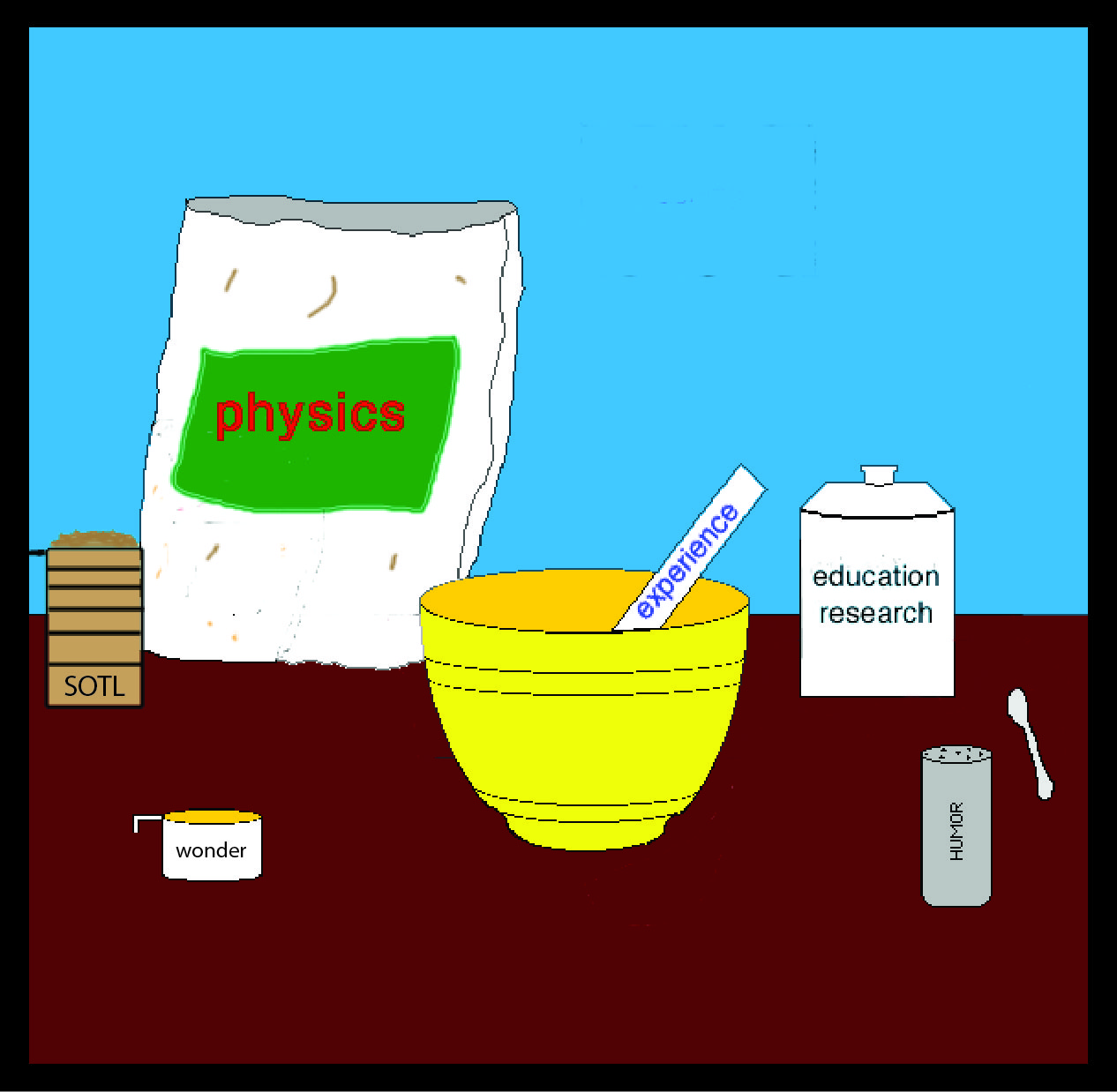Physics Education Research/Scholarship of Teaching and Learning
|
I have described my work in pedagogy and curricular development at time as pedagogical theory and at other times as curricular
engineering. But always my work stems from the fundamental question - How can I help my students learn more effectively?
My research questions arise from my interactions with students in and out of the classroom and so have covered the entire
undergraduate curriculum, the undergraduate research experience, the community of the department, and diversity and
inclusiveness in the larger physics community.
My research has therefore straddled traditional (!) Physics Education Research (PER) and Astronomy Education Research (AER) but the broader Scholarship of Teaching and Learning
(SOTL) as well.
|  |
An example of previous work was the development of an introductory laboratory environment that prepared students for genuine
research activity. The lab course, A Short Course in Experimental Philosophy (1,2) provided an environment that allowed students to
become more adept at asking questions, creating and modifying an extended investigation, working in groups, and to see themselves
as effective and valued members of that community of scholars. (This work was recognized by the American Association of Medical
Colleges in 2009 with the MedEdPortal for Undergraduate Science Pilot Program Award.)
Another example of my work in laboratory pedagogy was the lab experience I developed for the intro astronomy course, Projects in Astrophysics: An Open Invitation to Scientific Study.
The environment was designed to introduce non-science majors to the scientific inquiry used in astronomy and astrophysics by using discovery-based labs, case-studies
and journal articles to make observations and then to construct and modify theories. In addition, I have developed and taught an inquiry-based astronomy course for teachers.
A current project that is an outcome of that earlier work is the application of play theory to course design (3).
Four of the key perspectives that I have borrowed from the play theory paradigm are uncovering what we do in physics as play, the role of social
engagement, the need for continual assessment, and the concept of rhythm in the teaching/learning process.
Several years ago four students(PER Group 2012/13) and I began an exploration of the pedagogical properties of
textbooks (4, 5).
Practical outcomes of the project (which focused on a text (6) for our algebra based, pre-med course) consists of writing a problem
guide to supplement the textbook, illustrations to complement the textbook, and the development of a taxonomy to better understand
the role of illustrations in textbooks.
A second major focus of my current work is the revision of the course on introductory physics for the life sciences (IPLS). For a
number of years the physics community has been dissatisfied with the IPLS course but revising it has been persistently thwarted by
our poor understanding of all of the factors involved in the teaching/learning environment of both students and faculty. But PER
and BER are combing to start to ask more well-defined questions and there is a significant groundswell of resource development.
I am currently a co-PI on a grant that allowed the IPLS community to hold a Conference on Introductory Physics for
the Life Sciences in March, 2014.
My particular focus has been on developing communal-based learning environments that promote the growth of critical thinking and
social interactions that form the core of the 21st century skill set of STEM professional (including physicians and teachers)
and of the general voter (1,7).
My interest in faculty development has led me to develop and lead workshops on
- Reaching, Teaching, and Keeping Under-represented Groups in Physics
- Leadership Roles and Models in the Classroom, Academia and Beyond
- The First Year: Making the Transition from Graduate TA to Teaching Faculty
PER/SOTL Group (2012/13)
- Faith Larson (2013) - Analysis of Problem Sets in Physics in Proportion
- Allie Lau(2015) - Taxonomy for Text-based Visual Elements
- Edna Louie(2014) - Narrative Structure in Introductory Physics Textbooks
- Ressi Miranda (2015) - The Analysis and Comparison of MCAT Preparation for Physics in Proportion
and Fundamentals of Physics
PER/SOTL Group (2013/14)
- Allie Lau(2015) - (with Dr. Mila Kryjevskaia, NDSU)
Selected Papers/Talks
- 1. A Journey into Inquiry, Research, and Social Community in the Introductory Physics Laboratory: A Short Course in
Experimental Philosophy, Juan R. Burciaga, Conference on the Innovations in the Scholarship of Teaching and Learning at
the Liberal Arts Colleges, St. Olaf College/Carlton College, 2004
- 2. Crafting the Laboratory Experience: An Exercise in Pedagogical Design, Development and Assessment, Juan R. Burciaga,
MedEdPORTAL (2010), http://services.aamc.org/30/mededportal/servlet/s/segment/mededportal/?subid=8120, referenced 26 September 2010
- 3. The Application of Play Theory to Pedagogical Design, Juan R. Burciaga, APS Forum on Education Summer 2010 Newsletter
- 4. Textbook Design: An Exploration of Pedagogical Properties, Juan R. Burciaga, AAPT Summer Meeting, Philadelphia 2012
- 5. Application of Play Theory to Textbook Design, Juan R. Burciaga, AAPT Winter Meeting, New Orleans 2013
- 6. Preliminary Analysis of a Biology-based Physics Curriculum: Questions and Foundations, Juan R. Burciaga, AAPT Summer Meeting,
Philadelphia 2012
- 7. Inquiry, Close Reading, and Critical Analysis in Introductory Astronomy (poster), Juan R. Burciaga,
Gordon Research Conference on Physics Research and Education, June 2012
Last updated 9/06/2013
